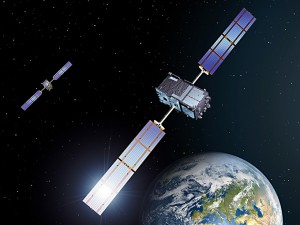
ESA’s new launch vehicle Vega is now ready to operate alongside the Ariane 5 and Soyuz launchers, after a successful qualification flight this morning from Europe’s Spaceport in Kourou, French Guiana.
The launch was initially planed for the end of January as previously reported on this site, but has been plagued with delays through out its journey. The new launcher passed its final hurdle on Saturday at Europe’s Spaceport, the Launch Readiness Review, and was finally cleared for take off. The first Vega lifted off at 10:00 GMT (11:00 CET, 07:00 local time) from the new launch pad, and conducted a flawless qualification flight.
The first mission, designated VV01 has a payload that consists of two Italian satellites – ASI’s LARES laser relativity satellite and the University of Bologna’s ALMASat-1, as well as seven picosatellites provided by European universities: e-St@r (Italy), Goliat (Romania), MaSat-1 (Hungary), PW-Sat (Poland), Robusta (France), UniCubeSat GG (Italy) and Xatcobeo (Spain).
Continue reading “ESA’s new launcher Vega scores success in maiden flight”

